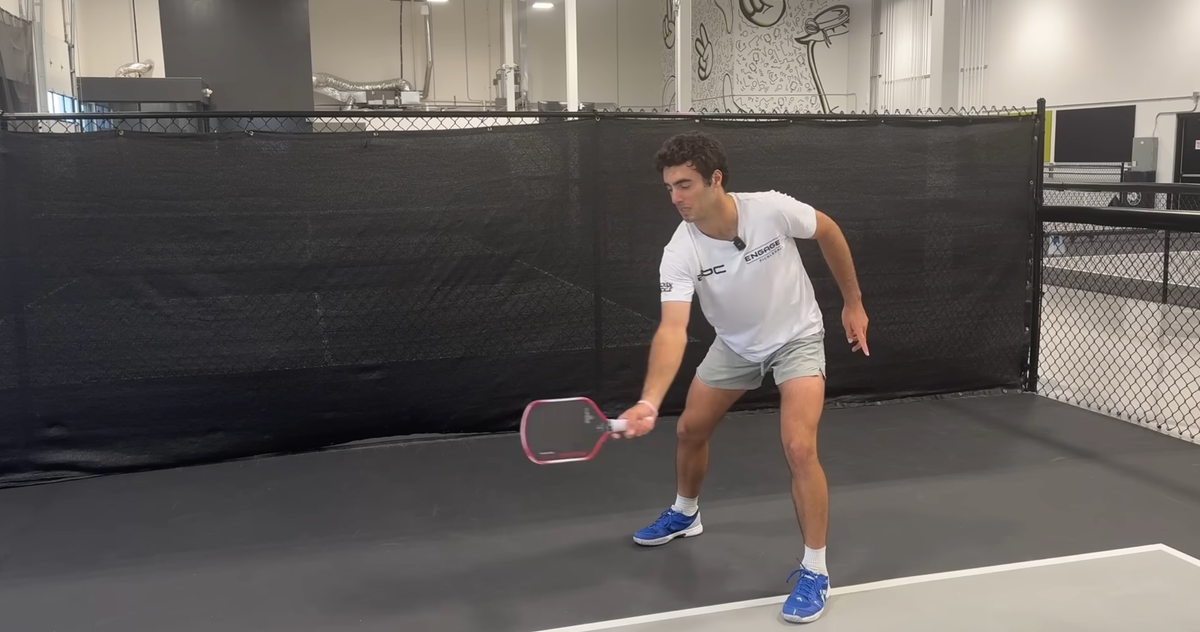Welcome to this comprehensive guide to enhancing your pickleball singles game, suitable for both novices and experienced players! Drawing from my experience as an MLP-signed player competing on the APP and PPA tours, I offer step-by-step instructions on drills and techniques to elevate your performance. This guide covers groundstrokes, net work, rolls, and hybrid drives, concluding with games to apply your skills. Learn the nuances of singles play with insights from my 2-hour drill sessions. As a professional since 2023, I became a 5.0 player at age 11, won over 10 Junior National Medals, and returned to pickleball with high aspirations after a four-year basketball hiatus. Want to learn more about Jack? Click here: https://jackmunropickleball.com/home Make sure to stay tuned and subscribe for more videos like this! Pickleball Singles Training Guide Mastering Your Singles Game: A Comprehensive Training Guide by Jack Munro Introduction 1. Groundstrokes (1:30) Groundstrokes form the backbone of your singles game. They are essential for maintaining rallies, setting up points, and controlling the court. Crosscourt Drills: Start with crosscourt rallies, aiming to keep the ball deep and near the sideline. Focus on footwork and positioning, staying balanced and ready for the next shot. Alternate between forehand and backhand strokes to improve versatility. Down-the-Line Drills: Practice hitting down the line, targeting the baseline. Work on consistency and accuracy, ensuring your shots stay within the boundaries. This drill helps in developing precision and control, crucial for winning points in singles. By dedicating time to groundstrokes, you enhance your ability to sustain rallies and create opportunities to finish points. 2. Net Work / Cat & Mouse Training (3:35) The cat and mouse game at the net is pivotal for developing quick reflexes and strategic shot placement. Knee Bending: Focus on bending your knees rather than lunging for balls. Bending your knees keeps you balanced, controlled, and ready for explosive movements. Crosscourt Strategy: In cat and mouse drills, prioritize crosscourt shots over down-the-line ones. This reduces the risk of easy volleys from your opponent and keeps them moving. Off-hand Training: Use your off-hand strategically for extended reach. Train to switch hands effectively without relying on it out of laziness. This training helps you stay agile at the net, improving both offensive and defensive play. 3. Rolls / Hybrid Drives (5:18) Rolls and hybrid drives are essential for keeping your opponent on their toes and maintaining offensive pressure. Neutral Rolls: One player stays at the baseline, hitting rolls to the player at the net. The net player focuses on controlling and returning deep shots. Crosscourt Rolls: Practice crosscourt rolls, emphasizing spin and control. Work on maintaining consistency and depth in your shots. Sliding and Footwork: Pay attention to your footwork, learning when to slide and when to cross your feet. This drill enhances your ability to move efficiently and return difficult shots. By mastering rolls and hybrid drives, you add variety to your game, making it harder for opponents to predict your next move. 4. Games (6:57) Applying what you've learned in actual games is crucial for development. Best of Three Matches: Play best of three matches to simulate tournament conditions. Focus on implementing drills from practice into your game strategy. Serve and Return Practice: Although not covered in the video, incorporate serve and return drills into your practice. These are the most critical shots in singles and should be a regular part of your training. Game Analysis: After each match, review what worked well and what needs improvement. Adjust your training focus based on this analysis. Playing matches helps in understanding how drills translate into real-game scenarios, providing valuable insights into your performance. 5. Outro (9:00) Reflecting on your practice and seeking continuous improvement is essential. Feedback and Adjustments: Solicit feedback from your practice partners and coaches. Be open to making adjustments to your training routine based on their input. Consistent Practice: Aim to practice regularly, focusing on different aspects of your game each session. Consistency in practice leads to steady improvement and confidence on the court. Setting Goals: Set short-term and long-term goals for your singles game. Track your progress and celebrate milestones along the way. By maintaining a disciplined practice routine and seeking continuous improvement, you can achieve significant growth in your singles game. Source: Jack Munro
Anuncie Aqui / Advertise Here
Sua marca para o mundo Pickleball! / Your brand for the Pickleball world!

 English
English  Spanish
Spanish  Portuguese
Portuguese  German
German  Italian
Italian  Japanese
Japanese  French
French  Polish
Polish  Russian
Russian  Netherlands
Netherlands  Hungarian
Hungarian  Turkish
Turkish  Videos
Videos 








 English (US) ·
English (US) ·  Portuguese (BR) ·
Portuguese (BR) ·